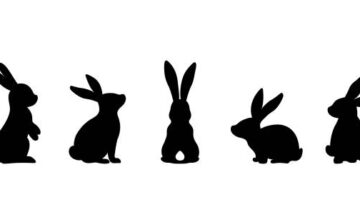Is the Easter Bunny a Retailers “Money Grab”

Easter Bunny
The Easter Bunny, as a symbol, has roots that predate its commercialization. It originated from German Lutheran traditions and was not initially created as a commercial entity. However, over time, the Easter Bunny has become associated with the commercial aspects of Easter, especially in the context of modern consumer culture.
The commercialization of the Easter Bunny began to take shape in the 20th century, particularly with the growth of the chocolate industry. The figure of the Easter Bunny was used to market and sell Easter-related products, such as chocolate bunnies and eggs, which have become staples of the holiday’s celebration in many parts of the world.
While the Easter Bunny itself was not created as a “money grab” by retailers, it has undoubtedly been embraced by the commercial sector to enhance Easter sales. The symbols of Easter, including the bunny and eggs, have been popularized through commercial celebrations, aligning with the spring imagery of new life and rebirth.
This commercial aspect is now a significant part of Easter celebrations, alongside the religious observance of the holiday. It reflects a broader trend where festive symbols are leveraged to support retail and marketing strategies, contributing to the holiday’s economic impact.
The Easter Bunny is a folkloric figure with origins among German Lutherans, where it was known as the “Osterhase” or “Easter Hare.” It played the role of a judge, deciding whether children were good or disobedient in behavior at the start of Eastertide. The creature would carry colored eggs, candy, and sometimes toys to the homes of children, similar to Santa Claus bringing gifts.
The hare, which later evolved into the Easter Bunny, was a symbol in medieval church art and was associated with the Virgin Mary and the Holy Trinity due to its high reproductive rate, which symbolized fertility and new life. The tradition of the Easter Bunny, particularly the custom of an egg-laying hare, was first mentioned in Georg Franck von Franckenau’s “De ovis paschalibus” in 1682, referring to a German tradition.
In America, the tradition of the Easter Bunny arrived in the 1700s with German immigrants who settled in Pennsylvania. They brought with them the tradition of an egg-laying hare called “Osterhase” or “Oschter Haws,” and their children made nests for this creature to lay its colored egg. This tradition has since become a staple of Easter celebrations in many parts of the world, symbolizing joy and the arrival of spring.
Tik4tat.com, tik4tatVID, tik4tatCHAT



